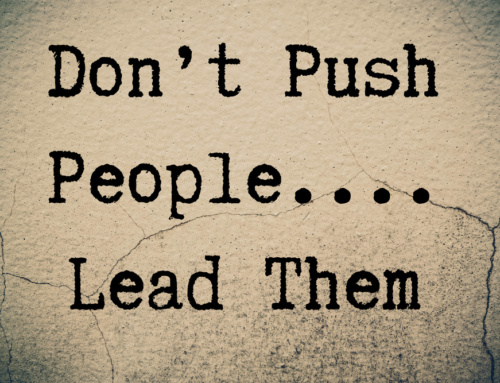 What do peers and managers perceive is unique about you in the workplace? What do you do so well, so uniquely that makes people stop and take notice? What’s your personal positioning strategy that meaningfully differentiates you from others in the minds of your customers, managers and stakeholders?
What do peers and managers perceive is unique about you in the workplace? What do you do so well, so uniquely that makes people stop and take notice? What’s your personal positioning strategy that meaningfully differentiates you from others in the minds of your customers, managers and stakeholders?
You’re to be excused if you need to reach for another cup of coffee while you contemplate these “brand called me” questions that you likely only think about once every two years when you update your resume.
What is that you do that sets you apart from the crowd in a way that builds your professional brand equity?
Successful professionals deliberately craft their professional positioning strategy and work hard at deliberately managing this strategy to grow their influence.
While this may sound like so much marketing-speak to you, ignore the guidance at your own peril. Given the talent available in the marketplace as well as the need for firms to re-arm and to pluck and place the best and brightest in roles where they can help navigate the stormy seas of today’s world, not having a professional positioning strategy is a commitment to floundering.
5 Steps for Developing Your Professional Positioning Strategy
1. Know Thyself: while this may be difficult depending how far you are up the Emotional Intelligence ladder, I encourage you to seek out reliable feedback on how you are perceived and valued. One professional developed her own survey and asked peers, managers and team members to answer some direct questions on perceived contributions, strengths and weaknesses…anonymously of course. Consider prior performance reviews. Ask trusted advisors and peers for their input. Fair warning…getting an accurate read on how we are perceived and how we are valued can be a challenging task. Many people are uncomfortable offering the type of quality feedback that you need to gain clarity and define improvements.
2. Assess the Environment: a good career strategist carefully considers environmental factors and forces, and so should you. Seek to understand your firm’s strategic goals and external market and competitive forces and then translate this knowledge into something meaningful for your career. Consider:
- What do the firm’s goals mean for you and for other employees?
- Is the firm placing increased emphasis on certain skill sets like project management or leadership?
- Are the priorities on cultivating cross-cultural relationships with suppliers and customers?
- Is the emphasis on identification of new revenue streams?
- Are we being challenged to innovate?
- What else is going on that might require me to invest in developing or strengthening my skills?
Tuning in to your firm’s needs and strategic direction allows you to frame your own positioning approach and supporting activities.
3. Analyze: what’s working for my coworkers? More questions: who’s getting ahead and why? Who is earning the plum project assignments? Who earned the most recent promotions. Are they better at cultivating influence than you are?
Drop the sarcastic, “they must have pictures” thoughts and look at these individuals as objectively as possible. Someone thinks highly enough of their skill sets and capabilities to provide opportunities, more responsibilities and more rewards to them. How would you characterize their brands? Observe and learn.
4. Summarize: what does all of the above mean for you and your brand? If you’ve been diligent in asking and answering the issues above, you’ve gained some nice raw content to begin framing your own professional strategy and personal positioning. Considering that most people aren’t working or even thinking about their careers at this level of detail, you’ve got a unique opportunity with this level of analysis.
5. Tying things together: ask and answer:
- Based on synthesizing my own situation and strengths and weaknesses and my firm’s needs, where do I need to invest in improving and gaining experience?
- My work above should give me a sense of my current brand identity. What is it? What do I want to change about this identity?
- What’s my desired professional value proposition? Craft a forward looking statement that addresses the issues of why people should trust, value, refer and rely upon you.
- What actions can I take to strengthen my skills, earn the trust and confidence inherent in my professional value proposition statement and increase my visibility?
- How will I measure my progress and continue to gain feedback?
The Bottom-Line for Now:
If this sounds like a cross between a strategy engagement and a marketing plan development, you’re spot on in your assessment. You can choose to let your career happen or you can deliberately manage your own personal professional brand and value proposition. The former relies upon chance and the latter helps you create opportunities. I opt for the active and forward-looking approach.






Art, a well thought out post. Many will see this as common sense, but we all know about the “common-ness” of common sense. I would propose that your words should be equally important to the small (or large for that matter) professional services firm. Firms rarely take the time to take time out to ensure that they are still on the right path. I was just thinking about this on my trip in. Firms and people are all alike. We are busy doing things, collecting things (if you’ve been in your house for any length of time, look at the slow disappearance of spare room in your basement). Spending time on your 5 steps will ensure your direction is desired.
Thanks, Keith. Agreed for the small business or services practice. The urgent and urgent unimportant often get in the way of doing the common-sense but easy to push-off activities. Like cleaning out my basement! Thanks so much for sharing your wisdom here. -Art
Art,
Thanks again for the words of wisdom. It is interesting to think that it is important to market our selves as well as our companies. I like to get feedback from more experienced co workers on how I interacted with a client, or if I gave them accurate information as a way to see if I am improving with my sales strategies.
Ira
Ira, great approach to supporting your own professional development! Thanks for reading and commenting. -Art
Thanks for the advice. I have a services consulting business (structural engineering) and struggle against being a commodity and educating clients that they do get what they pay for and the cheapest price engineer is not necessarily the best choice.
Brett, if you have not read John Jantsch’s book, Duct Tape Marketing, I think that you would find it helpful for your very challenge. John really focuses on this very important dilemma for firms like yours. Thanks for reading…and commenting. -Art